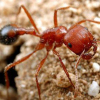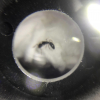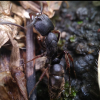- Formiculture.com
- Forums
- Gallery
- Members
- Member Map
- Chat

P. Californicus killing pupae
Started By
Broncos
, Nov 23 2019 8:48 AM
7 replies to this topic
#1
 Offline
-
Posted November 23 2019 - 8:48 AM
Offline
-
Posted November 23 2019 - 8:48 AM
First they just stay still and die but now they leave shriveled pupae on the foraging space. (They still stay still and die)
Why is this happening!
Sent from my iPhone using Tapatalk
Why is this happening!
Sent from my iPhone using Tapatalk
Currently Keeping:
Pogonomyrmex Californicus Bicolor & Concolor
Pogonomyrmex Subnitidius
Camponotus Sansabeanus
#2
 Offline
-
Posted November 23 2019 - 10:28 AM
Offline
-
Posted November 23 2019 - 10:28 AM
What are they fed on? Are they hydrated often? What are they housed in?
Argentine ants are mean.
#3
 Offline
-
Posted November 23 2019 - 10:35 AM
Offline
-
Posted November 23 2019 - 10:35 AM
They are fed assorted seeds, housed in Drew’s dirt boxes, and they are hydrated
Sent from my iPhone using Tapatalk
Sent from my iPhone using Tapatalk
Currently Keeping:
Pogonomyrmex Californicus Bicolor & Concolor
Pogonomyrmex Subnitidius
Camponotus Sansabeanus
#4
 Offline
-
Posted November 23 2019 - 11:13 AM
Offline
-
Posted November 23 2019 - 11:13 AM
Have they been showing weak or no movements? If so, they probably have mites, a disease, or humidity isn’t correct. They could also be bringing up the brood if you overwater them, or if you disturb them too much.
Argentine ants are mean.
#5
 Offline
-
Posted November 23 2019 - 11:26 AM
Offline
-
Posted November 23 2019 - 11:26 AM
Yea they have no movement. The queen along with 20 workers in the chambers are fine. I’ll check the humidity
Sent from my iPhone using Tapatalk
Sent from my iPhone using Tapatalk
Currently Keeping:
Pogonomyrmex Californicus Bicolor & Concolor
Pogonomyrmex Subnitidius
Camponotus Sansabeanus
#6
 Offline
-
Posted November 23 2019 - 9:09 PM
Offline
-
Posted November 23 2019 - 9:09 PM
may be its too humid, my Odontomachus colony do this too once when i watered their nest too much
Colony:
2 Odontomachus aciculatus
2 Polyrachis Dives
3 Camponotus sp
#7
 Offline
-
Posted November 24 2019 - 6:21 AM
Offline
-
Posted November 24 2019 - 6:21 AM
Ok thank you
Sent from my iPhone using Tapatalk
Sent from my iPhone using Tapatalk
Currently Keeping:
Pogonomyrmex Californicus Bicolor & Concolor
Pogonomyrmex Subnitidius
Camponotus Sansabeanus
#8
 Offline
-
Posted November 24 2019 - 9:27 AM
Offline
-
Posted November 24 2019 - 9:27 AM
How do they do in a tube and tubes setupWhat are they fed on? Are they hydrated often? What are they housed in?
Sent from my iPhone using Tapatalk
Currently Keeping:
Pogonomyrmex Californicus Bicolor & Concolor
Pogonomyrmex Subnitidius
Camponotus Sansabeanus
1 user(s) are reading this topic
0 members, 1 guests, 0 anonymous users















